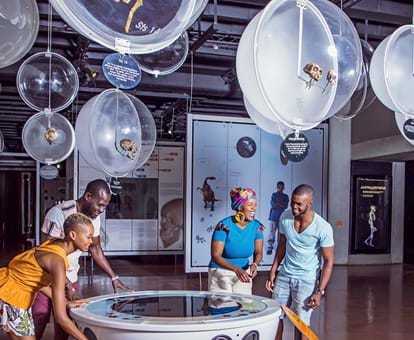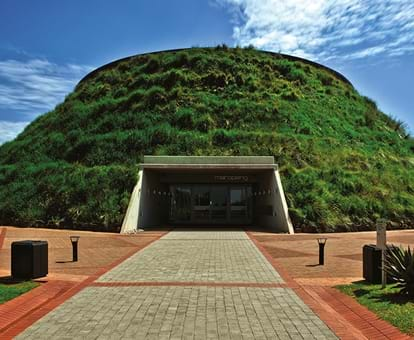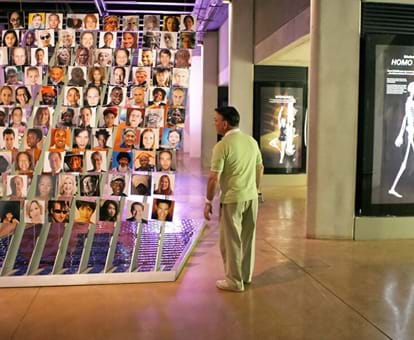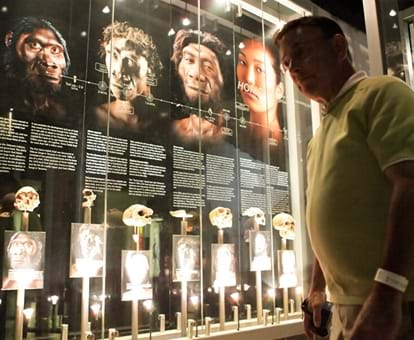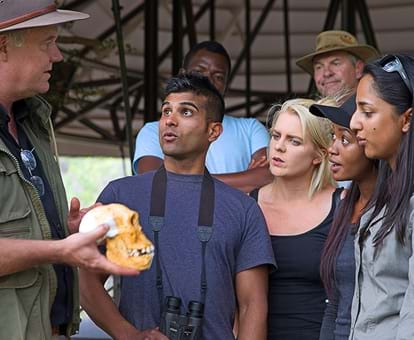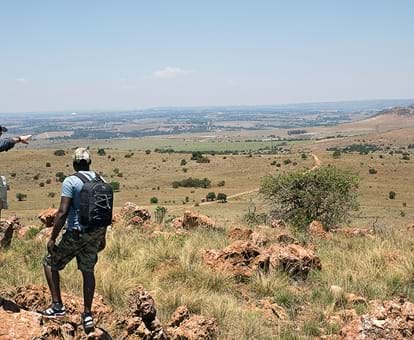By creating an account, I agree to the
Terms of service and Privacy policy
Choose your country and language:
Africa
Americas
Asia Pacific
Europe
DDriving through the grasslands, an hour outside the city of Johannesburg, an expansive territory (47 000 hectares), filled with limestone caves and fossil sites, has been named the Cradle of Humankind. The Cradle, so named because it was the earliest area in which evidence of our ape-like ancestors were discovered, was named a UNESCO World Heritage Site in 1999. Through UNESCO the Cradle is additionally known as the Fossil Hominid Sites of South Africa, and includes sites within Gauteng and the North West provinces of the country, dated to between 4.5 and 1 million years ago.
Touring through the yellow grasses, scattered with patches of dense bush, it is possible to imagine small hominins (our ancestors and cousins since our last common ancestor with chimpanzees) navigating the landscape. But do not be fooled into thinking that the little hominin was safe: hyenas, eagles and other carnivores used to be abundant in this area, and the limestone caves, pock-marking the earth with hidden holes, are easy to fall into.
These treacherous caves have allowed for the preservation of these hominins, as well as the animals that lived with them, cementing them in hardened rock known as breccia. Today, palaeoanthropologists who study these ancient ape-like humans, are slowly excavating through the hardened rock within these caves, uncovering the secrets of our evolution. With more than three dozen excavated sites in the region, and over 850 fossil hominin remains of multiple species, the region is one of the most abundant human fossil sites in the world.
Dozens of sites have been excavated in this region, yielding evidence from at least five hominin ancestors and cousins; from the ape-like Australopiths, to the older members of our own genus, Homo. Dozens more have been identified, yet remain untouched by researchers for the time being. The Cradle has also yielded the remains of cousins to the Australopiths, Paranthropus robustus: an ape-like hominin with large teeth and chewing muscles for eating hard, fibrous foods. Notable famous sites include Swartkrans, Drimolen, Kromdraai, Gondolin (where the largest ever hominin tooth was discovered) and others.
TThe earliest discovery of a fossil hominin in South Africa was that of a small ape-like child, discovered in 1924 in what is now known as the Taung Skull Fossil Site. It’s possible for local and international researchers and tourists alike to visit Sterkfontein, the site of the earliest discovery of an adult Australopithecus africanus, nicknamed Mrs Ples. The site has proven incredibly abundant, producing fossils of many hominins and associated animals, dated to between 3 and 1.5 million years ago. A journey through a portion of these dark, expansive cave systems, led by knowledgeable tour guides divulging its geological and historical secrets, is well worth a visit.
Two recent finds have stimulated renewed scientific and public interest in the Cradle. In 2008, the fossil bones of two individuals of the newly named Australopithecus sediba were discovered at the site of Malapa. In 2013, excavations in the Rising Star Cave System near the Cradle, conducted by a team led by Lee Berger, was filmed by National Geographic, stimulating both national and international enthusiasm. The hominin fossils uncovered at Rising Star were also of a new species, Homo naledi, which appears to have lived recently, relative to other hominins in the region (300 000 years ago).
The researchers hypothesise that, despite having a small brain, Homo naledi appeared to dispose of their dead in these cave systems, a type of burial considered incredibly sophisticated and only being attributed to members of our own species. These discoveries are unearthing the intricate and complex nature of our evolution and our bushy family tree.
FFor those wishing to learn about the Cradle and human evolution in a family-oriented setting, Maropeng is the official visitor centre of the region. Maropeng, meaning “returning to the place of origin” in Setswana, celebrates our evolution, welcoming visitors from all over the world. Drive up to the dome-shaped, grass-covered centre, and take a tour through our shared history and prehistory, designed with interactive tools and features. Maropeng has a hotel, conference centre, restaurants and shops, making it a perfect getaway for professional events or an informative, yet luxurious holiday.
The Cradle has so much to offer us, scientifically and spiritually. We have a unique connection to the region through our shared heritage. Yet these sites are not only relics of an ancient past. They are active, constantly yielding new discoveries and promoting greater understanding about humankind.
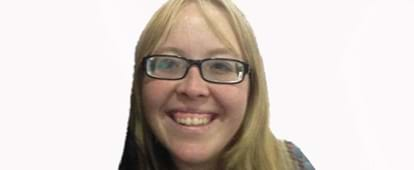
AAbout the author
Kerryn Warren has a PhD in archaeology and is currently working as a data scientist at the South African Environmental Observation Network (SAEON). Later this year she will continue as a postdoctoral fellow at the University of Cape Town where she will pursue research in human evolution, outreach and teaching. She is passionate about science communication, having won the national Three Minute Thesis (3MT) competition in Science and Technology, and having placed second in the SAASTA Young Communicators competition in the Audio category (both 2017).
Co-author
Nomawethu Hlazo is a student at the UCT, currently undergoing her doctoral degree. She completed her undergraduate degree in biochemistry and archaeology.
Since then her postgraduate studies have focused on the genus Paranthropus and the variation that exists between and within species. Following the fossil species, she has concentrated on the study of geometric morphometrics and will follow new techniques such as paleoproteomics to investigate not only shape change, but contributions of evolutionary processes and ecological niches occupied by the genus Paranthropus. Since the start of her research with Paranthropus, she has worked at several sites, not only in the Cradle of Humankind but in Kenya too. After completion of her Masters she has been able to show the contributions of both natural selection and genetic drift, and their roles in shaping Paranthropus craniomandibular variation.
Related articles

|Terms and conditions|Disclaimer|Privacy policy|Terms and Conditions-Valentines Campaign
